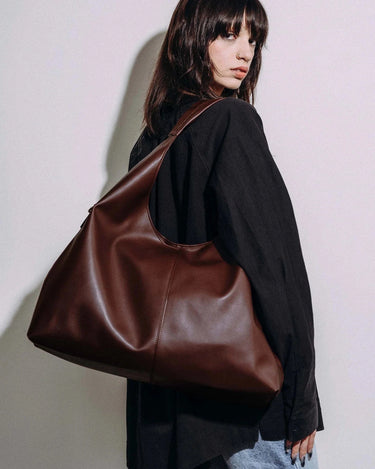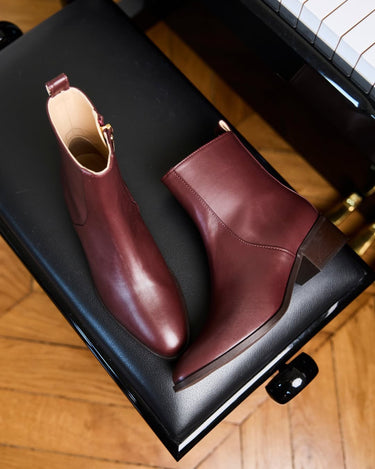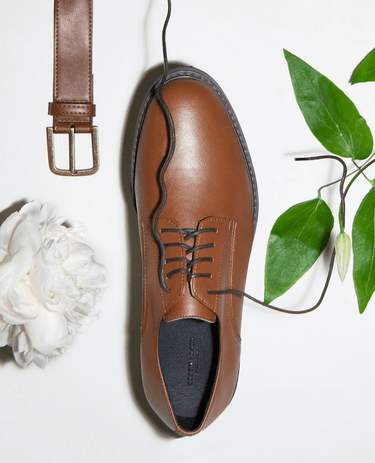The Dangers Of Fast Fashion – And How To Ditch It
April is the month of Fashion Revolution – a movement to spark conversation about how fashion affects human rights. It's a time to remember the Rana Plaza tragedy, where a garment factory collapse in Bangladesh saw over 1,300 people lose their lives, and reassess the ways in which we view, consume and discard clothing.
By Sascha Camilli: writer, speaker, activist, and vegan fashion expert.
Fashion is a constant in everyone's lives: we all wear clothes, and the garments we wear impact so many people beyond ourselves. This is why the choices we make around what we wear are inherently political. Fast fashion, born out of a wave of outsourcing labour to cheaper countries – particularly Asian ones – in the Seventies, fast fashion cemented itself in the late Nineties as an accessible model for those who wanted cheap clothes fast. All of a sudden, with the arrival of chains like H&M, Zara, and Primark, it was possible to wear the latest trends – without spending a fortune.
Someone always pays
But nothing is truly free in fashion, and someone along the line always ends up paying for our cheap, quick impulse purchases. The fast fashion model plays a role in the rise of modern slavery – our desires for constant new purchases puts garment workers (approximately 80% of whom are women) in unsafe conditions where they are forced to work 12 to 14-hour days, go into debt, and not be able to feed their families of afford medical treatment. They commonly work seven days per week, surviving on limited sleep and food. Sexual abuse and harassment are also rife in the industry, while migrant workers face unfair wage cuts and threats of violence and deportation. Grace Forrest, founder of the anti-slavery organisation Walk Free, has told VOGUE: "Exploitation is the industry standard. So much of this industry is underpinned by rampant exploitation of both people and the planet.”

The environmental cost
The planet does indeed also pay the price of our quick and easy shopping. Fashion is responsible for 10% of all carbon emissions – the equivalent of the entire European Union. The production process is highly resource-intensive, which is amplified by the staggering quantities of clothing produced. The rampant pace of production threatens non-renewable resources such as water, alongside using large quantities of energy. All this to have a large part of these items end up in landfill – up to 100 billion garments are produced each year, and around 92 million tonnes of textiles end up in landfill. This is largely due to the low quality of the clothing, which causes it to break more rapidly and not last as long. But another big factor in the amount of textile waste is our cycle of "on-trend" fashion.
The damage behind trends
The dynamic of trends exacerbates all the issues that fast fashion create. By proclaiming that some things are "trendy" and others aren't, we are basically encouraging a mass-discard of the past trends. Let's remember the hordes of skinny jeans showing up in every charity shop after fashion media proclaimed that they were "dead". Now that style queen Kate Moss has been seen in them again and the style set are warming up to wearing them again, will those fashionistas mourn their discarded pairs, which by now will be poisoning the Earth in landfill? Fashion is cyclical, meaning that lots of the things we thought were dead and gone are likely to return again. To start the work of fixing fashion's damaging impact on the planet, it is imperative to get rid of the trend mentality and work with a slower mindset when it comes to the ways we consume clothing.

Leaving fast fashion behind
Letting go of fast fashion doesn't mean never to shop again – it stands for a mindful approach to clothing, choosing well, and buying to last. A slow-fashion mindset is a calmer, less stressful and anxious way to bring clothing into your life, and a more loving approach to it once it is there. A few tips to to get started:
Find new favourites. Explore small, ethically minded brands who work hard to make change happen in fashion. A good place to start is here.
Slow fashion doesn't have to break the bank. If you're shopping fast fashion for financial reasons, it's time to discover second-hand shopping. Whether it's your local charity-shop scene, pre-loved marketplaces, or apps such as Depop and Vinted, there is a world of amazing hidden gems to find and love.
Play the long game. Don't just shop for a specific party or occasion – imagine the garment living in your wardrobe for years to come. What will you wear it with? On what occasions? Make sure it really fits into your life.
Let go of trends. Work on finding your personal style and have a better understanding of what you like and what you feel comfortable in. That way, trends won't have as much of a sway on you and you'll end up with fewer impulse purchases that end up in landfill.
By Sascha Camilli
About Sascha
Sascha Camilli is a vegan fashion writer, speaker and activist. Her book Vegan Style is out now on Murdoch Books. For more about Sascha, you can read our interview with her or read her newsletter Kind of Wild. You can also follow her on Instagram, Twitter and LinkedIn.
Cover image by Artem Beliaikin. Second photo by Marcus Loke, third photo by Markus Spiske. All via Unsplash.
For more great content like this in your inbox, sign up to our newsletter, and save 10% off your next purchase, plus great savings throughout the year.
Related Articles

Vegan Christmas Gifts For Him

Vegan Christmas Gifts For Her
















































































































